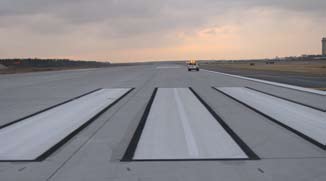Earlier this year, Houston’s George Bush Intercontinental Airport fixed a problem that had been brewing for years. One of its most critical runways, 9-27, reopened after crews repaired premature crazing – closely spaced top-down cracking, tearing, corrugation and ripples in the asphalt of the landing areas and high-speed exit areas.
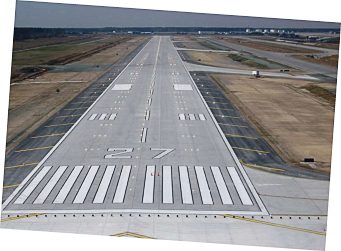 |
|
Facts and Figures Project: Runway 9-27 Rehabilitation Location: George Bush Intercontinental Airport, Houston, TX Owner: Houston Airport System Runway Size: 10,000 ft. long, 150 ft. wide Approximate Cost: $35 million Engineer: PBS&J Design Support: Applied Research Associates Contractor: W.W. Webber Planning: 2 years Construction: Approximately 4 months The need: Repair preamature crazing on one of airport’s key runways |
“The type of surface failure is not a type of failure that is often observed,” notes Jim Hall, Ph.D., director of pavement research for the project’s design/engineering subcontractor Applied Research Associates. “The runway was failing at a rapid rate and required significant repairs to keep it operational until a new design was formulated.”
With the culprit identified and a repair strategy in place, the Houston Airport System closed the critical runway for rehabilitation in late September 2008. Construction took little more than four months, ending ahead of schedule and in time for a February 2009 reopening. The $35 million project is expected to add another 20 years of useful life to the runway.
 |
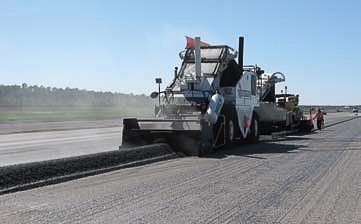 |
Crews also upgraded the runway’s approach system during the repair project. “This was an excellent case of cooperation between our airport and the federal government,” notes Eric Potts, Houston Airport System interim director. “Timing the rehab and navigational aid installation as one mission minimized the amount of time the runway was out of service.”
What Was Needed
During the repair portion of the project, crews added a 14-inch concrete overlay that covers the entire surface of the 10,000-foot long, 150-foot wide asphalt runway. According to airport officials, the overlay is designed to strengthen the base level by 400%.
Upgrades to the runway’s approach system included enhanced lighting, markings and electronics systems to allow pilots to conduct instrument landings even in the most severe weather conditions.
 |
“Because of the unusual structure of the runway, a special analysis using our finite element program was conducted to study the impact of placing new concrete over the stiff foundation,” explains Hall.
The LCF mixture had gained hardness as a base layer over 20 years of use, which further challenged engineers to devise a repair option that accommodated the pavement structure and limited the amount of removal and replacement to help reduce costs, Jones notes.
Finding a long-term solution was of primary importance to the airport’s management.
Time was Ticking
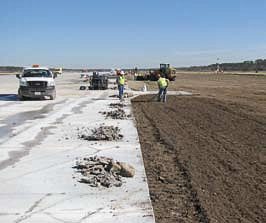

Runway 9-27, the airport’s primary arrival runway, is the closest to the terminal. Closing it for repairs temporarily displaced traffic to two more remote runways, 8L-26R and 8R-26L, which increased airlines’ operating costs and the potential for time delays. Minimizing the duration of the closure was obviously critical.
With timing so key, bid documents called for prices at various construction durations from a maximum of five months to as little as two months.
 | 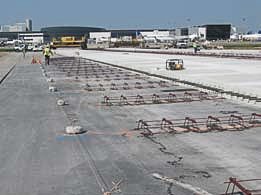 |
 |
Once work began, it ran nearly around-the-clock. Coordination was a top priority to ensure that the activities leading up to the reopening of the runway were completed on time.
“Houston Airport
|
|
Hall, of Applied Research Associates, also noted the cooperation. “The airport staff was an integral part of the team, ” he adds. “We had several working meetings to review our findings and refine our recommendations. This teaming of all parties was a major contributor to the success of the project.”

